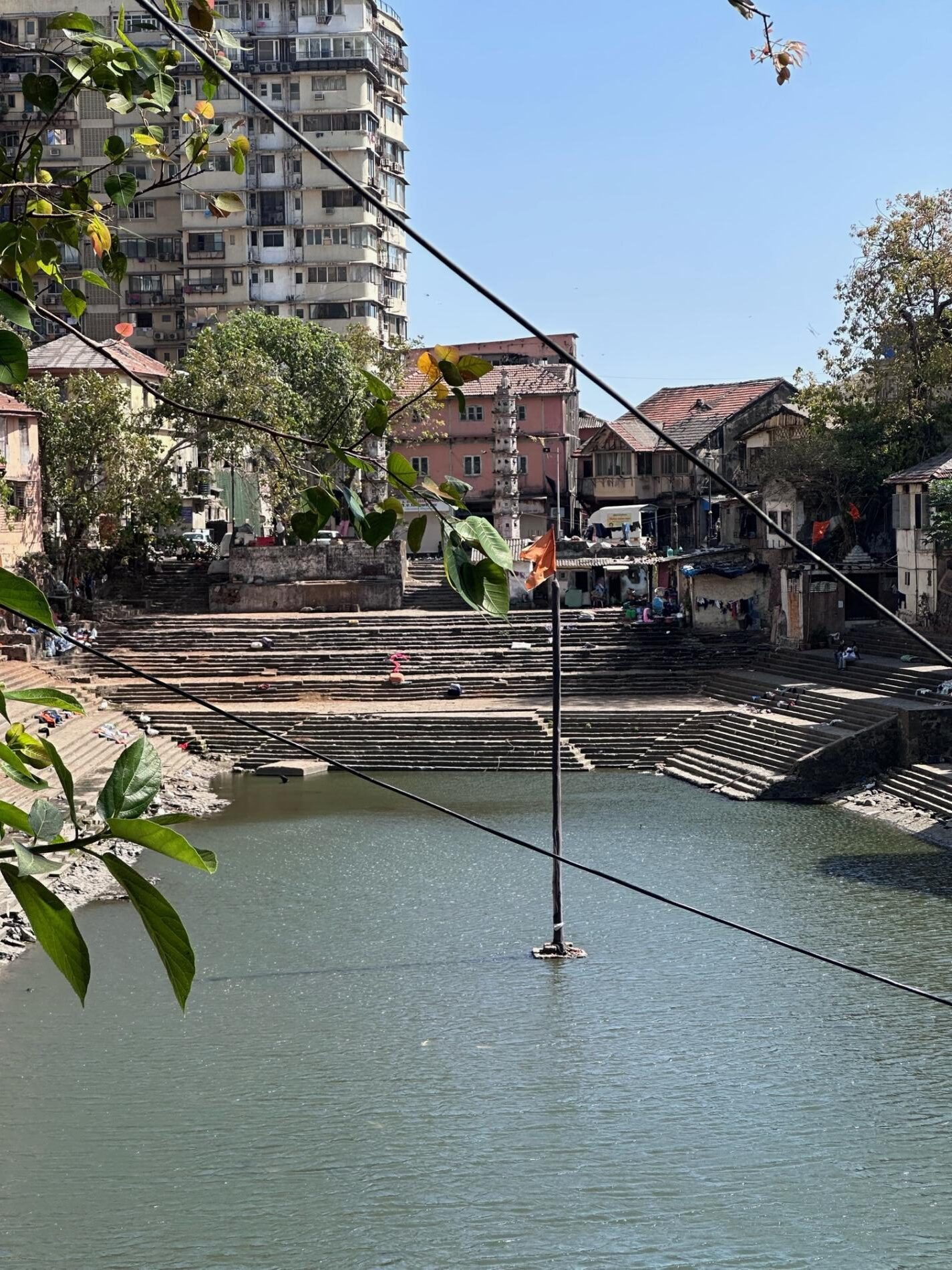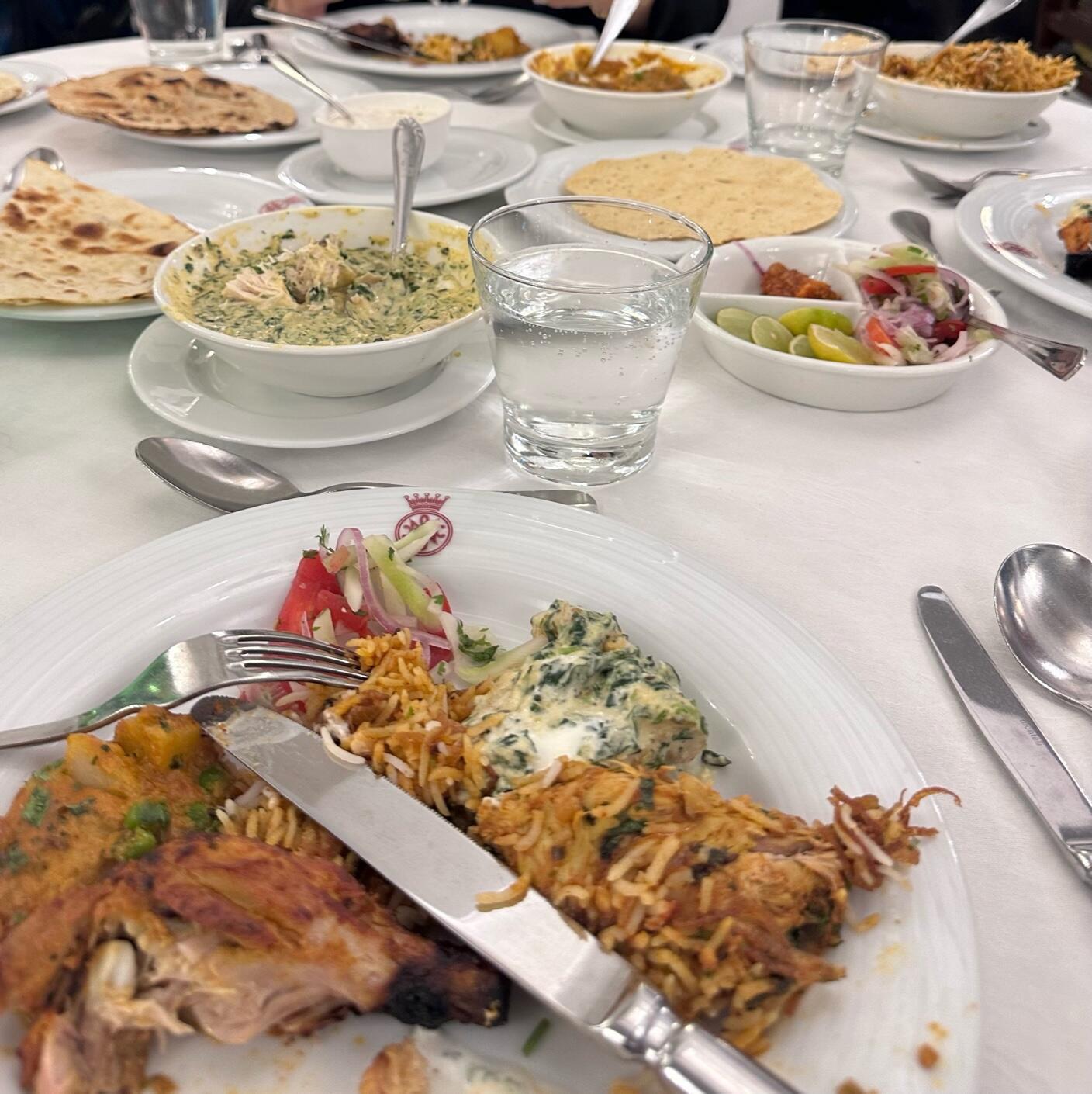Mumbai, Day 3
- At September 03, 2023
- By Jessica
- In Travel
 0
0
In our opinion, no place better underscores the travesty of relying on news headlines for your impression of a place than Mumbai. You've just got to see it for yourself.
Take the slums, for instance. They do not fit our preconception of a slum. They are beehives of small industries such as leather tanning, embroidery, pottery, recycling, and others. The children all go to school and the adults all have jobs. Even begging is an organized industry. These people just have no place to live due to a scarcity of housing exacerbated by government policies we elaborate on below. Think of the slum-dwellers as the pioneers of the work-from-home movement.
India has no welfare, food stamps, or social security. Everyone has to scratch out their own living however they can.
There are some people living on the street but, frankly, it's not much different from the US homeless problem.
Every residential building 3-4 stories high contains rental apartments. All rents have been frozen since 1947. Rents are between $3-10 a month. Crazy, right? That's why the buildings are in such disrepair; landlords have no money or incentive to maintain their properties or retain tenants. We had a similar situation in New York for many years due to archaic rent control laws. Finally, the laws were changed.
It comes down to supply and demand. Not enough housing for 22m people. The housing stock that does exist is either astronomically expensive or tied up for many generations by the price freeze mentioned earlier. And incomes do not support costs of available housing.
In contrast, Mukesh Ambani, chairman of Reliance Group and the richest man in India, built a 27 story home for $2B. He hired 600 staff from the Oberei hotel to wait on him, his wife, his mother, and his one remaining son who is soon getting married and moving out.
There are several private hospitals that are so good Mumbai enjoys a thriving medical tourism business. We saw one Muslim hospital built by the Aga Kahn that looks like a palace. It is open to anyone who can pay. The Parsi private hospital is also very good but only available to Parsis. If the mother is a Parsi and the father is not, or vice-versa, the issue of that marriage cannot be delivered in the Parsi hospital. If you are poor there are government hospitals that are not considered to be very good.
Mumbai is currently the 5th largest city in the world. It is the most European city in India and strikes us as such. It is laid out like a European city, with trees and parks, and all those gorgeous architectural masterpieces.
This morning we started out at the Gateway of India. It was built in 1911 to welcome King George V and Queen Mary. It is also the gate through which the last British soldiers left in 1948. The locals love to underscore the irony that the same gate was used to welcome the British and to usher them out.

Gateway of India
We passed by several other of the 94 historic buildings in Mumbai including the Reserve Bank of India, the Town Hall built in 1804, Barracks of British soldiers, the Natural History Society, the Police Headquarters, Mumbai University from 1857, and the Indian Naval Headquarters. The navy is very important in India because it is surrounded by water on three sides by the Arabian Sea, the Bay of Bengal, and the Indian Ocean.
The British ruled for almost 250 years. They left behind fabulous structures, a legal system, a form of government, it's language, and infrastructure such as trains and a postal system.
Feeding cows and pigeons satisfies the Hindu custom of doing a good deed every day. Cow feeding stations exist throughout the city.

A fleet of 55,000 yellow and black taxis run on compressed gas cylinders that drivers keep in their trunk. In addition, there are 75,000 licensed Uber cabs. It is said there are eight religions in Mumbai. 64 percent of the population is Hindu, 15-18 percent are Muslim and the rest are Jain, Buddhist, Jewish, Parsi, and others. There is a ninth religion worshipped by all - cricket!
The Parsi religion, known outside of Mumbai as Zoroastrian, is fascinating. There are only 110,000 Zoroastrians in the world of which 50,000 live in India. The sect fled from Persia to India between 785 and 936 to avoid religious persecution by the Muslim majority. The Dadar Parsi colony in Mumbai numbers about 15,000 but includes some of India's wealthiest families including the Tatas, who own more than 100 Indian companies. The Parsis worship the elements of nature, not gods. Their places of worship are called Fire Temples where a fire burns 24/7. Only Parsis may enter a fire temple.
Hidden by Mumbai's Hanging Garden, so named because it hangs over a reservoir not because people are lynched there, are 55 acres of land (in the middle of Mumbai!!) owned by the Parsi. On this plot of land are the five Towers of Silence - or dakhma. Parsis do not cremate or bury their dead but place the bodies in these towers to be eaten by vultures. The bones turn into powder. This procedure is only and still performed in Mumbai.
After the Hanging Garden we visited the Mahalakshmi Dhobi Ghat. Dhobi = washerman. It is the largest open air laundry in the world. Over 8000 men work together where each man has his own cubicle, beats the clothes on a rock, air dries, then irons. Home pick up and delivery included. The Dhobi Ghat has been in existence for 120 and started as a service for the British.

Our last stop today was the former home of Mahatma Gandhi. It is now a museum. It was such a rich and moving experience we will dedicate a post just to that.
Mumbai, Day 1
- At August 20, 2023
- By Jessica
- In Travel
 0
0
Victoria Terminus
We were completely unprepared for how stunning Mumbai is. We've read many books about the slums, political and religious strife, gang rapes, hotel massacres, and vast disparity between rich and poor. All of that exists amidst architecture that is magnificent and grand, thousands of trees, a beautiful beach that runs the length of the city like a sparkling collar. It is extremely painful, however, to see barefoot children and babies living on trash-strewn streets.
An astonishing 62 percent of Mumbai's 22 million population live in slums or on the street. Many others live in dilapidated housing with no gas lines and toilets without water. Yet every other building looks like it's part of Oxford University.
Imagine walking down Fifth Avenue and a cow is blocking rush hour traffic. That's just what happened to us today in Mumbai. Alas.... Bovines, bovines everywhere, but not a steak to eat in this mostly vegetarian culture.
It was a beautiful, breezy, not so humid day in Mumbai or what is still called Bombay by the locals. In 1534, the Portuguese named the city Bom (big) bahai (postal area) - not very glamorous when you dissect it, is it? The city came under the control of the British Crown in 1661 and was immediately leased to The East India Company for 10 pounds per year. The name was changed to Mumbai, as part of the Decolonization Act in 1995. The city's name is derived from Mumbadevi, the patron goddess of the fisherfolk who migrated to the islands from Gujarat centuries ago.
Mumbai is India's wealthiest city, home to Bollywood, and beautiful art deco cinema palaces and hotels reminiscent of Miami Beach. Originally, the city was seven islands inhabited mostly by fisherman and salt merchants. Fortification and land reclamation efforts undertaken by the British made one land mass. This project was completed in 1918, which explains the preponderance of art deco buildings along the shore.
Victoria Terminus Train Station is a magnificent building melding multiple architectural styles. It is beautifully lit up at night, apparently electrified for the G20 meeting.
Trains are the city's lifeline, where 8 million people commute daily. Local trains leave every three minutes and have NO AC. Each train has twelve coaches of which three are exclusively for women. During the lengthy security procedures every time we get on or off the boat, men and woman must be separated.
It is fascinating to us how common it is to have many generations of family living together under the same roof of a rambling old apartment. Our dinner hosts have a 50 year old son, his wife and child, and their 45 year old unmarried son all living with them. She says, "It's a party all the time." We just read a book called Family Matters by Rohinton Mistry (yes the same author as A Fine Balance) on this subject. It was terrific.
Mumbai is known for its diversity of neighborhoods so we embarked on a walking tour to get a first hand feel. One area looks like Embassy Row in Washington, DC, lined as it is by former English private clubs. We were invited by friends to fine at their club last night. The club is still named after British Lord Willington.
The Malabar Hill neighborhood faces the Arabian Sea. One of Jessica's book groups read The Widows of Malabar Hill a couple of years ago. Another interesting read.
According to Hindu religion, ashes of dead persons must run through the waters of the sacred River Ganges in order to return to the cycle of life to be reborn. The Ganges does not run through Mumbai but human beings are nothing if not resourceful so we visited this lake fed by a fresh water spring reputed to originate at the Ganges.

Before 10 am every morning Mumbai residents can be found performing these death rituals. First they immerse the ashes of the deceased, then they shave their heads, (there is an enterprising barber at the lake,) then they bathe, then they go to temple but only after ten days of mourning.
After our fascinating walking tour of Old Mumbai, we proceeded to a fashion designer's home/showroom. The charming Portuguese style home has been in the designer's family for 220 years. Jessica made a new friend in the dressing room - Sangeeta. We will meet her again. Needless to say, we made a huge contribution to the Indian economy before leaving the shop.
Certainly the highlight of the day was a wonderful dinner with our friends mentioned earlier. Their club is gorgeous, like stepping back in time to the Raj era. And we let them order for us so we sampled a smorgasbord of Indian delicacies. We wonder how you say smorgasbord in Hindi?

It was a little creepy coming back late at night. The port is abandoned save for starving packs of stray dogs (and we don't just mean the cab drivers). Next time we travel abroad we're going to pack a suitcase full of dog biscuits.



